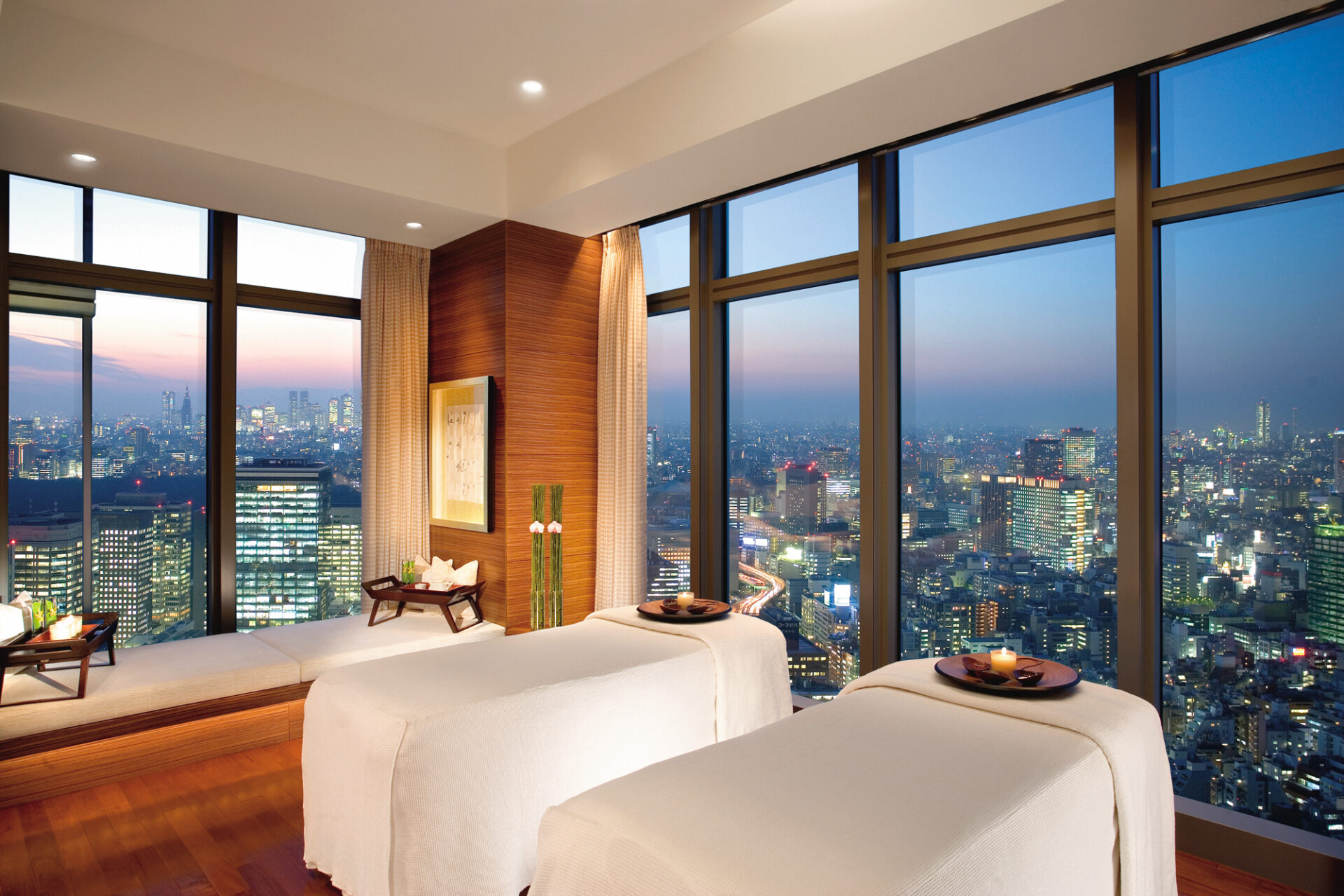
Misty Fujii is a Canadian DJ and writer who came to Japan seeking adventure and stuck around for love. Living life as a bucket list in progress, she’s as passionate about sharing her stories as she is experiencing them. She gets excited about collecting vintage vinyl records, food from all countries, traveling, and renovating her traditional Japanese house. She can be found on Instagram @djmisty
This post may contain some affiliate links. When you click through and make a purchase we may receive some commission, at no extra cost to you.
Don’t let the winter chill keep you away from one of Japan’s most beautiful and historical cities. The temperature tends to hover around -2℃ (28.4℉), and the cold bites a little more than it does in the neighboring prefectures, but winter is an underrated and exquisite time for a holiday in Kyoto. Bundle up to experience the wonderful illuminations and charming snow-covered buildings while sharing the former capital’s famous sights with far fewer tourists than usual. Thankfully, Kyoto is also known for its phenomenal onsen (hot springs) that will warm you to the bone on even the coldest day.
1. Kitano Tenmangu

Shrines are beautiful all year round, but this shrine is extra stunning from early February to the end of March when plum blossoms are blooming on the grounds. If you visit on February 25, you’ll be able to participate in the Plum Blossom Festival, honoring the late Sugawara no Michizane, also known as the deity of learning. You can drink matcha green tea served by maiko (apprentice geisha), browse a flea market, admire the 2000 plum blossom trees and, of course, explore the shrine itself. You can get to the shrine by bus from Kyoto Station.
▼ Speaking of Geishas, Maikos and Green Tea; there is a tour with Geisha and Green Tea Experiences. Make sure to check it out!▼
2. Kifune Shrine
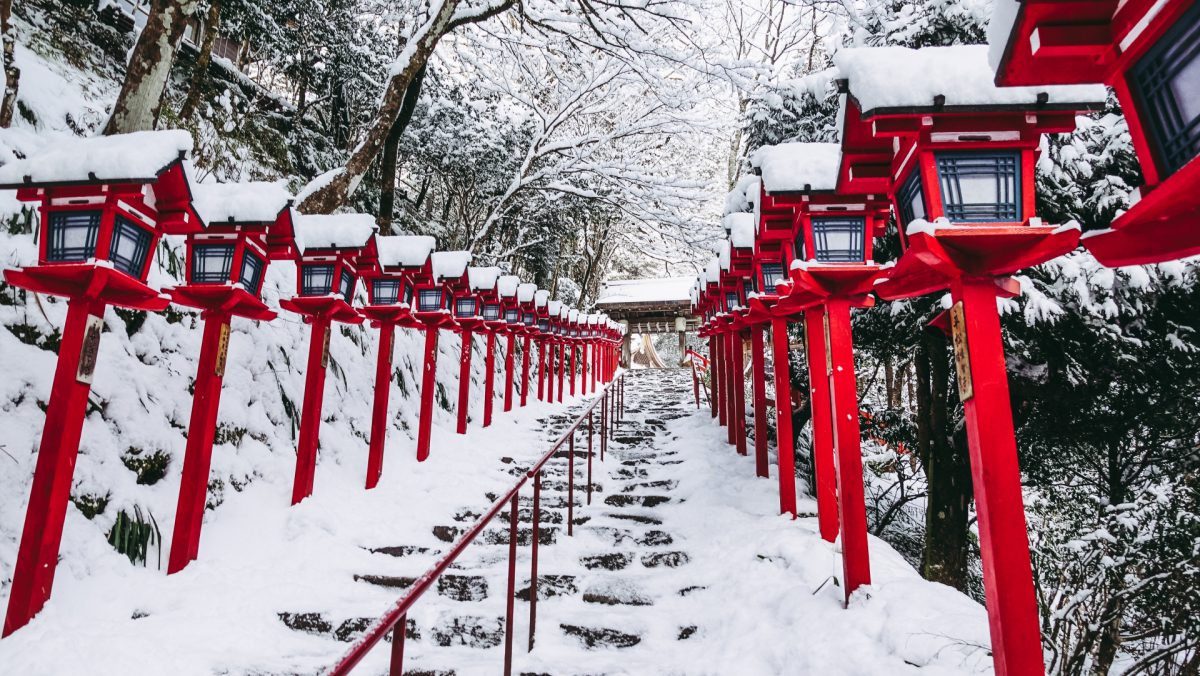
Pay respects to the deity of water and rain at this shrine located in the village of Kifune, only 30 minutes from downtown Kyoto. Take the northbound Eizan train from central Kyoto and enjoy the peaceful scenery surrounding Kifune. Take your time exploring the three locations that make up Kifune Shrine, which has existed for over 1600 years and hence is older than Kyoto itself.
You can start your excursion at the main shrine with its stone staircase lined by maple trees and red lanterns. Here you’ll find a small pool of water used for fortune-telling. You’ll also see statues of horses representing the gifts once offered to the deities here; a black horse asks for rain, and a white horse asks for clear skies. If you wish to follow the traditional shrine visiting procedure, you’ll next head to the Okunomiya Shrine before backtracking to the Yui no Yashiro Shrine, which is famous as a matchmaking powerspot. Open year-round, Kifune Shrine is especially picturesque in winter, and its snow-covered lanterns are featured on many postcards, posters and billboards.
3. Kurama Onsen
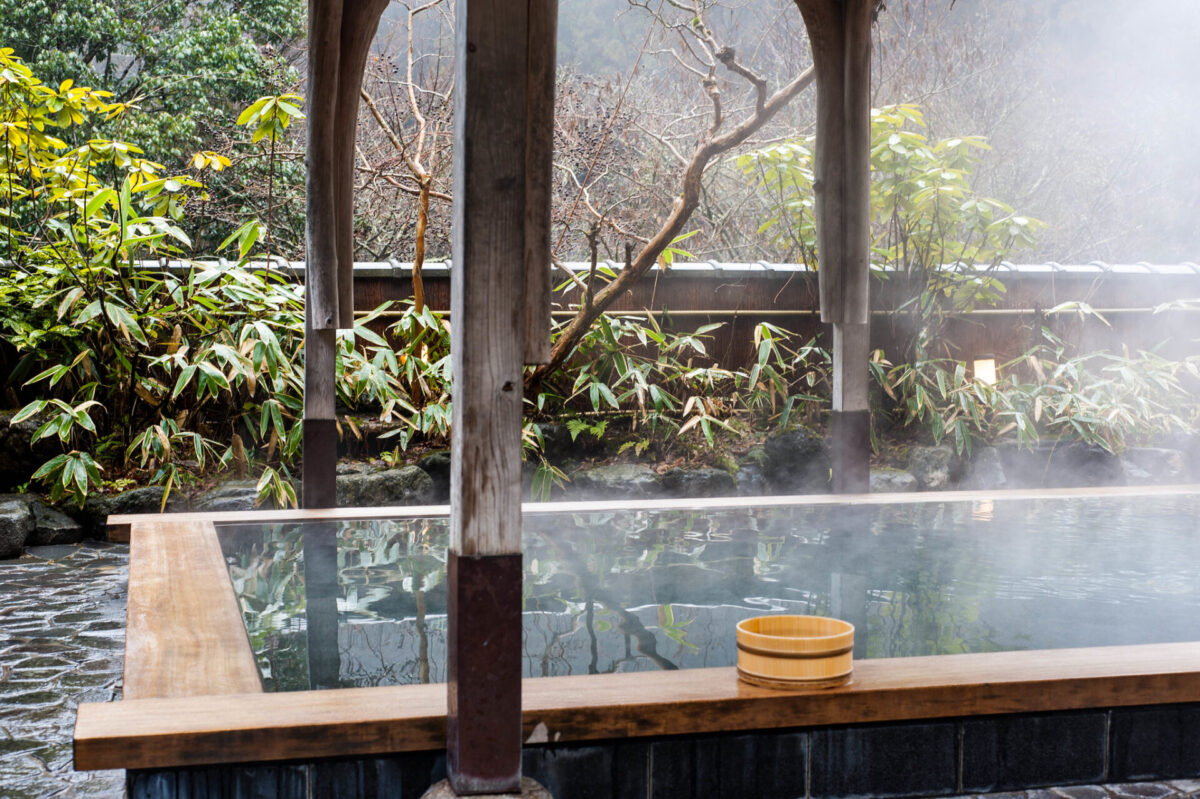
Continue through the forest from Kifune to the neighboring valley of Kurama, and you’ll find one of the best and most accessible onsen in Kyoto. A quick, free shuttle bus ride from Kurama Station is the easiest way to get there. Relax outdoors in the natural sulfurous hot spring surrounded by mountains, forest and serene nature. Kurama’s winters may be bitterly cold, but a soak in the baths here will warm you to the core.
(Kurama Onsen is temporarily closed until further notice)
4. Kinkakuji Temple
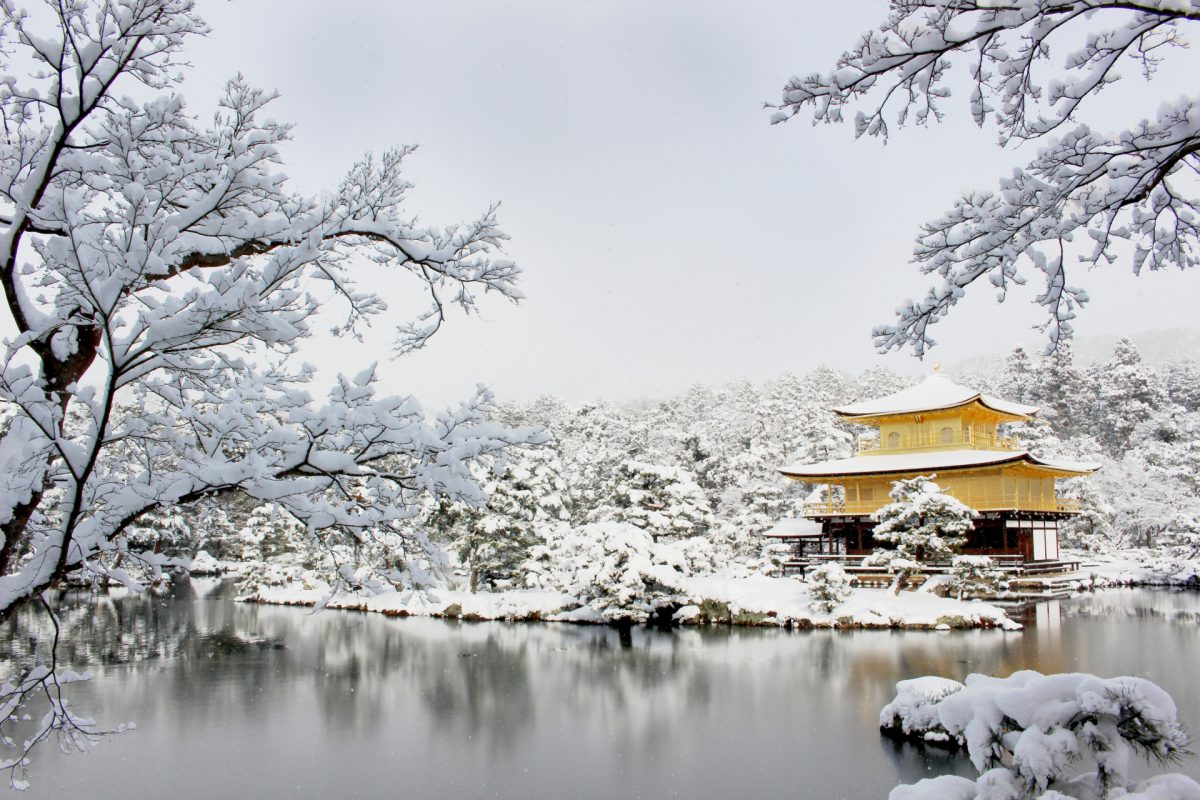
One of Kyoto’s most famous sights takes on a different aesthetic when surrounded by snow-dusted trees, with the bright white snow offering a striking contrast to the golden temple. Overlooking a pond that reflects it perfectly, the photogenic temple’s top two floors are covered entirely in gold leaf. This extravagance represents the culture of the wealthy aristocrats during the rule of shogun Ashikaga Yoshimitsu. Constructed to be his retirement villa, Kinkakuji Temple became a zen temple after the shogun’s death in 1408. There is also an enthralling garden surrounding the temple. Open daily from 9 to 17, Kinkakuji is easily accessible by bus from Kyoto Station.
5. Kayabuki no Sato
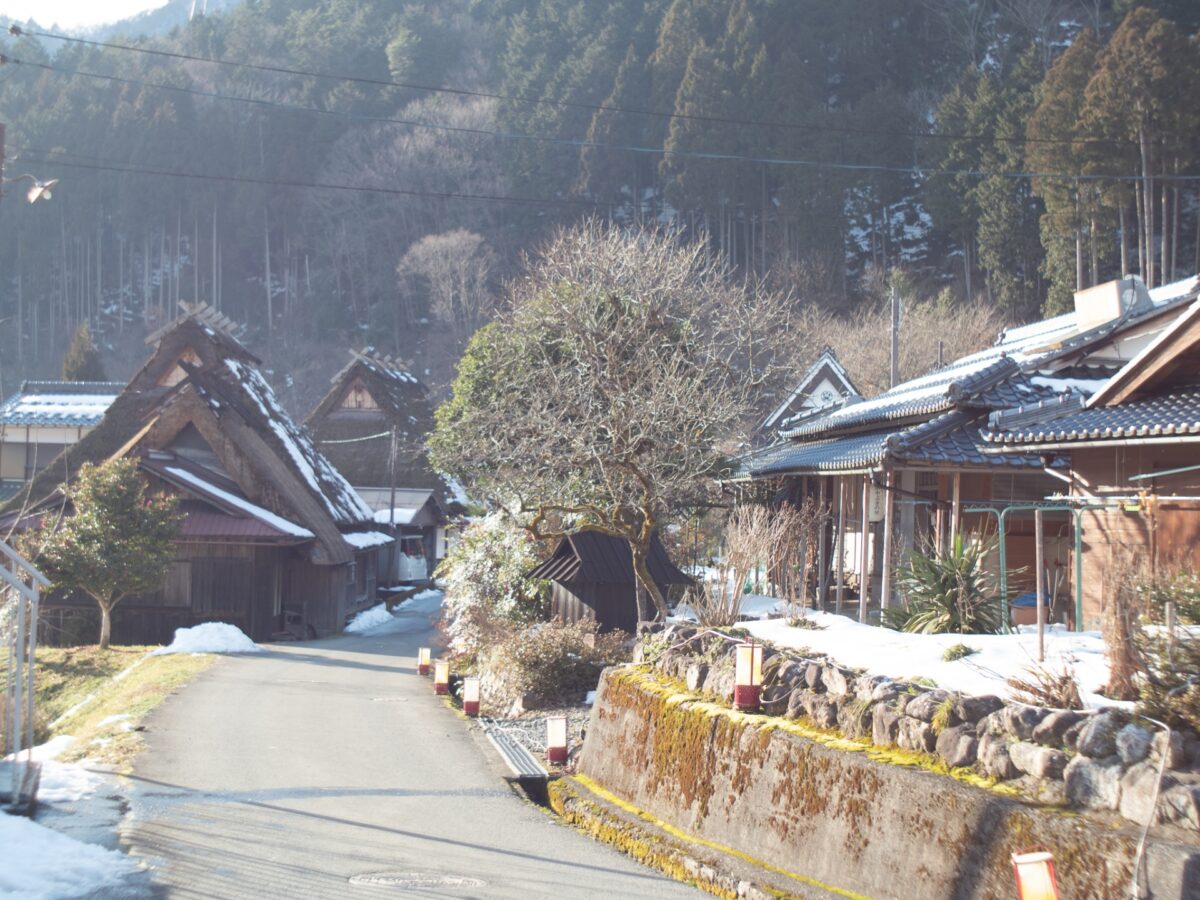
Wander back in time to the rural village of Miyama, two hours north of Kyoto City. Here you’ll find a traditional town filled with thatched roof houses also known as “kayabuki no ie”. The roofs were built to be able to resist the area’s heavy snowfall and keep water out. This means winter is the best time to see them serving their true purpose! It’s well worth a visit during the Kayabuki no Sato Snow Lantern Festival in late January to early February when lanterns illuminate the village making for an enchanting experience. Among the many residential homes, you’ll also find the Miyama Folk Museum, several shrines, guesthouses and a few cafés.
6. Amanohashidate
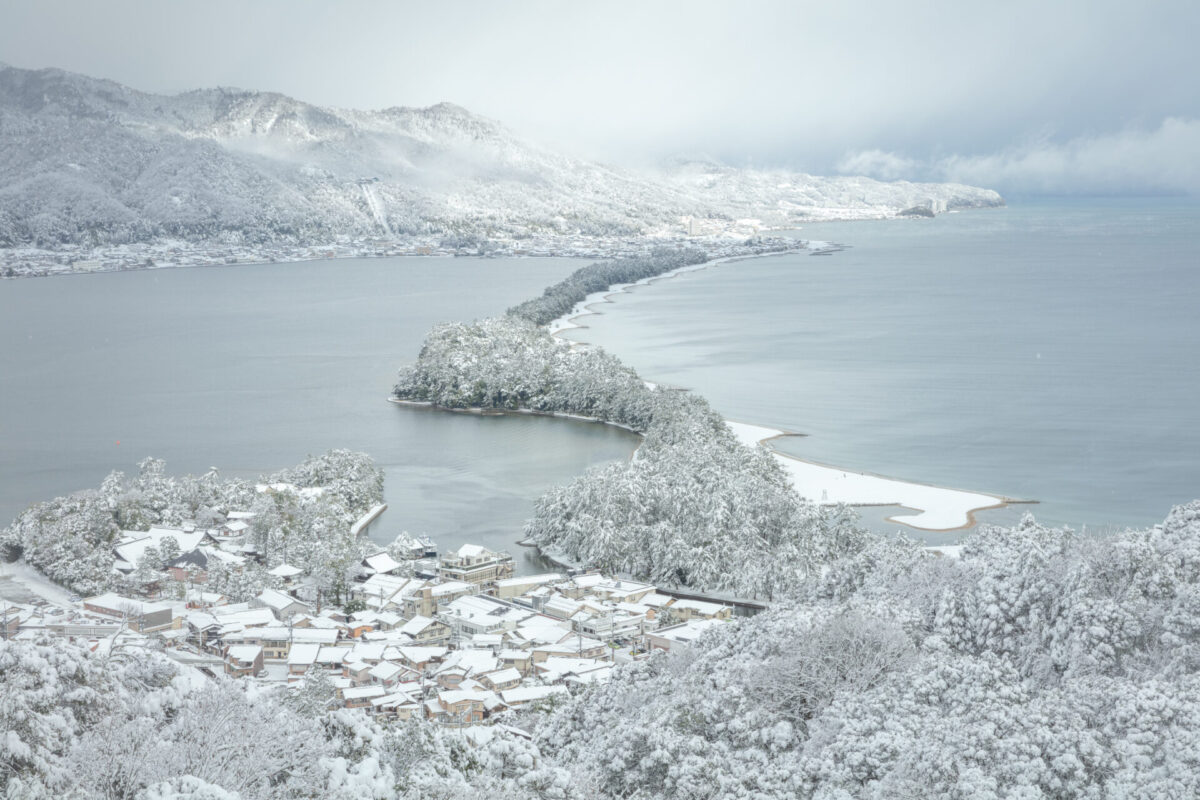
Meaning “bridge in heaven”, Amanohashidate is a 3km long sandbar in northern Kyoto, which is counted as one of Japan’s three most scenic views. When viewing it from above, it might look like a bridge or a dragon depending on the angle from which you are looking. Follow the peaceful path along the sandbar, which takes about 45 minutes on foot. Alternatively, observe it from nearby parks on either side for a bird’s eye view – the mountain top Kasamatsu Park is a particularly good viewpoint. Winter provides an incredible awe-inspiring view as the sandbar is covered in pristine, white snow. Trains from Kyoto Station reach Amanohashidate Station in about 2.5 hours.
7. Arashiyama
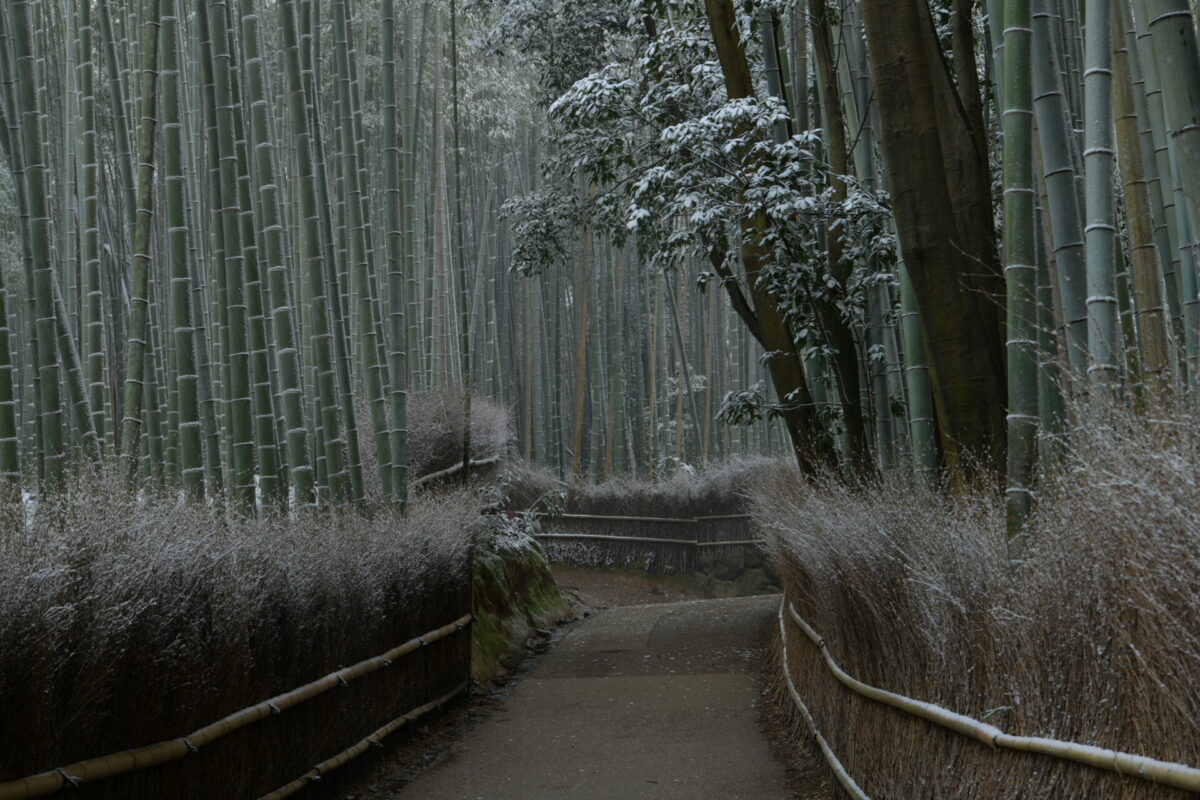
You may be familiar with Arashiyama, home to Kyoto’s famous bamboo forest, but seeing it in winter is a whole other experience. The majestic bamboo dusted in snow make the forest appear like something straight out of a fairytale. Accessible 24 hours a day, the best time to snap incredible photos is either early morning or late evening. Arashiyama is also home to Tenryu-ji Temple, Togetsukyo Bridge and Nonomiya Shrine, to name a few of the attractions that make this an area not to be missed. As a bonus, if you go in December, you can see the whole area illuminated during the Arashiyama Hantoro event, making for a magical sight.
8. Hozukyo Gorge

Kyoto is full of spectacular nature. Stretching from the Hozu Bridge in Kameoka City to Togetsukyo Bridge in Arashiyama, the Hozukyo Gorge is a panoramic dreamscape. Take the Sagano Romantic Train from Arashiyama to Hozukyo Station to admire the vast gorge below you. You can also explore the hiking paths or take a river boat for a slightly more adventurous experience. This area can otherwise get crowded with tourists, so coming in winter is an opportunity to take in the views undisturbed.
9. Daikon-daki at Daihoon Temple

Pray for good health by eating daikon radish during the Buddhist bodhi day “Daikon-daki” on December 7 and 8. While every temple in Kyoto has its own dates and significance for this practice, Daihoon Temple observes Jodo-e, the Celebration of Shakyamuni Buddha’s Enlightenment. The main hall is designated as one of Japan’s national treasures and contains the oldest wooden building in Kyoto City. It is also said that visitors will be blessed with marital harmony thanks to a statue of Okame, the wife of the temple’s carpenter. City buses from both Kyoto Station and Karasuma Station can take you to the temple.
10. Sanzen-In Temple

Take a stroll on the spacious grounds of Sanzen-In Temple, located about an hour north of central Kyoto in the town of Ohara. From Kyoto Station, the quickest way is by subway and bus. Alternatively, you can take a direct bus if you don’t want to transfer. Famed for its gardens, which are beautiful year-round, and a temple that sits in a sea of green moss, this is the perfect place to relax and feel at peace. But during the winter time, you can see the beautiful garden covered in snow!
There are many different buildings to see here, and it is one of only five Monzeki temples where the head priests were traditionally members of the imperial family. In February, experience true Japanese hospitality when residents make and serve delicious daikon radish soup that will warm you up from the inside on even the coldest days.
Make the most of your winter trip to Kyoto by appreciating the prefecture’s cold snow and the warm hearts of the people living there. It’s well worth beating the springtime crowds to take in the ancient capital’s famous sights in a quieter and more peaceful atmosphere.
Japan Wonder Travel Tours in Kyoto
When you are visiting Kyoto and you need some help organizing your trip, you came to the right place. We’re happy to help you make your trip to Kyoto the best trip ever. We can advise you on where to go or even better, show you around with a local, English speaking guide. Let us help you create safe, comfortable, and unforgettable memories in Kyoto!
▶Kyoto 8h Private Custom Highlight Tour with Licensed Guide
On this full-day private tour of Kyoto, you will be able to see the highlights of Kyoto in just one day and at the same time develop a deeper understanding of both the culture of the area and Japan as a whole.

▶Meet a Geisha in Kyoto: Guided Walk in Gion and Enchanted Time with Maiko
Meet a Maiko, a geisha in Kyoto, and enjoy a walking tour in Gion, the geisha district. See an authentic Japanese tradition unfold before your eyes that has existed for hundreds of years. You’ll have chance to take a photo with Geisha!

▶Explore Nishiki Market: Food & Culture Walk
If you’re looking to learn more about the culture and the local cuisine of Kyoto, this is the perfect tour for you! Take part in this Kyoto food and drink tour and explore the 400-year-old market and the famous surrounding areas.
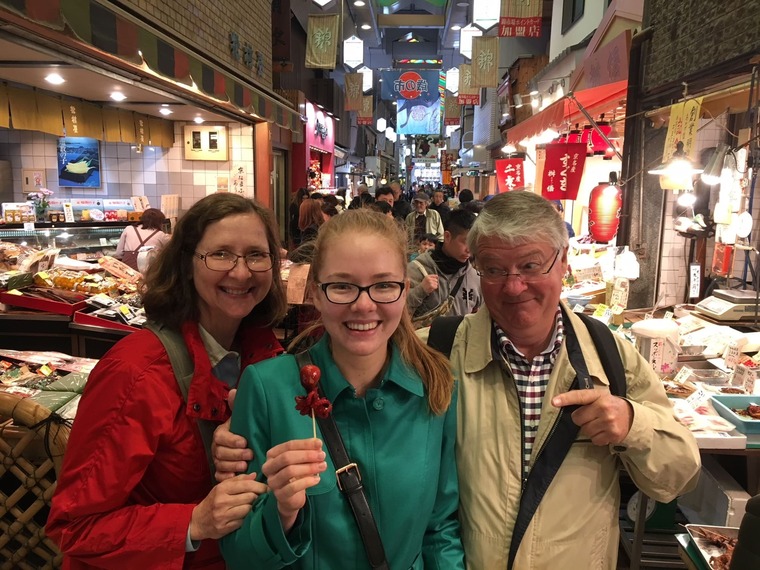
▶Kimono Experience
Kyoto is the best city to explore in kimono, Japanese traditional clothing. You can choose the one you like the most from several patterns and colors at the rental shop. In Kyoto, two locations are both accessible from the main tourist attractions which makes it easy to try it on and explore the city for a day!

Follow us on Instagram, Facebook, Twitter, and TikTok for more travel inspiration. Or tag us to get featured!
Happy traveling!
Stay informed of the best travel tips to Japan, the most exciting things to do and see, and the top experiences to have with the Japan Wonder Travel Newsletter. Every week we will introduce you to our latest content.




